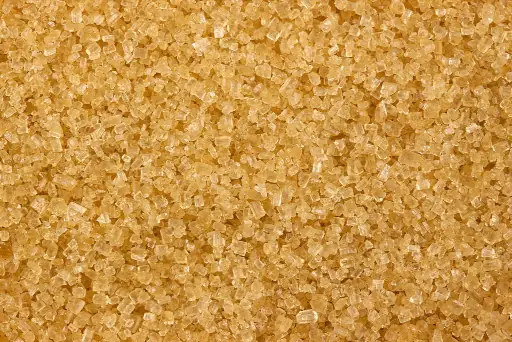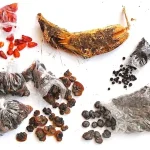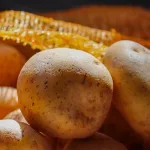If you’re looking for a natural, delicious, and long-lasting way to preserve food, look no further than sugaring food preservation!
Sugaring is an old food preservation technique that uses sugar, either in the form of syrup, honey, or molasses, to preserve fruits and vegetables.
Many cultures around the world have used sugaring for centuries as a way to store and enjoy food year-round. In this guide, you’ll find out how sugaring works, how to make your own sugar syrup and some tips and tricks for getting the best results when sugaring food.
So let’s dive in and get started on your sweet journey with sugaring!
What Is Sugaring Food Preservation?
Sugaring is a general term used to describe a preservation technique that uses sugar, water, and lemon juice to preserve foods.
An osmotic effect is produced when sugar is blended with raw foods, such as fruits and veggies. This implies that the sugar absorbs the water present in the food, thus leading to a decrease in the water amount.

Bacteria require water to grow and reproduce, so decreasing the water activity in a food product implies that there are fewer free water molecules available for the bacteria. This creates a situation that restricts microbial life and development.
The sugaring process is a great way to make all your favorite jams, sweeteners, and preserves last longer without the use of preservatives, additives, or artificial ingredients.
With the sugaring food preservation method, you can make delicious treats like candied apples, pineapple rings, banana chips, and many more.
Benefits Of Sugaring
There are some benefits to sugaring over other preservation techniques. Sugaring allows you to preserve all kinds of fruits and vegetables, including seasonal items that might otherwise not last in your pantry.
With sugaring, you can use all parts of the food item. This includes seeds, skins, and cores that are often discarded during other preserving methods.
Additionally, sugaring does not require you to use any special tools or canning equipment. You can preserve food in mason jars, plastic containers, or resealable bags.
Ingredients Needed For Sugaring
Sugar, water, and lemon juice are the main ingredients needed for sugaring. You can also add other flavoring or coloring agents to customize the recipe.
These optional ingredients include salt, pectin, citric acid, ascorbic acid, and other preservatives. The amount of sugar and lemon juice needed may be different depending on the type of food and the amount you want to preserve.
A Step-By-Step Guide To Sugaring
Here’s a step-by-step guide to sugaring and creating your own tasty, natural preserves.
First, prepare the food item you want to preserve. This can be anything from apples, pears, and peaches to apricots, nectarines, and plums. Next, cut the food into pieces that are appropriate for your desired preserves. For example, apples are typically cut into slices before candying to make them easier to eat.
Once all the food items are prepared, mix the water and sugar in a pot and boil them. Once the sugar has dissolved, add the lemon juice and reduce the heat to a simmer.
Add the prepared food items and stir until they are entirely covered with the syrup.
Cook the food in sugar syrup.
Once the preserves are fully cooked, remove them from the pot and dry them.
Place them in the containers that you plan on storing them in. Let the preserves cool before storing them in the pantry to prevent the containers from breaking due to the extreme temperature difference.
Certain fruits can be coated with sugar syrup before being put into storage. This sugary layer on the surface of the fruit and the high sugar content inside helps it to stay fresh for a longer time.
Additionally, alcoholic preservation combined with sugar is regularly used to preserve certain luxurious items like brandy and other alcohols with fruits. However, you should have in mind that this technique is distinct from fruit-flavored spirits such as cherry brandy and apple wine.
Different Types Of Sugared Foods
Sugared preserves come in all different flavors and varieties. Some of the most popular sugared food items include:
- banana
- apples
- pear
- plums
- apricots
- ananas
- carrot
- ginger
- onions
Tips For Successful Sugaring
Here are some helpful tips for a successful sugaring experience. Make sure you use fresh, high-quality ingredients, especially fruit.
Rotten fruit will make rotten preserves, so choose products that look and smells fresh.
Make sure to prepare the food properly before sugaring. This includes slicing, coring, and peeling (not necessarily) the food items you want to preserve. This will make the sugaring process go smoothly and ensure that none of the food gets wasted.
Common Sugaring Mistakes To Avoid
While sugaring is a fun and easy preservation technique, there are a few mistakes to avoid:
- Make sure to use an adequate amount of sugar in the syrup. The syrup should be thick but not too thick.
- Avoid over-cooking the preserves.
- The food should be covered in syrup rather than swimming in it. This can cause the preserves to become too liquid and syrup-like.
- Be sure to let the preserves cool before storing them in the pantry.
Sugaring Recipes
Here are some sugaring recipes to get you started:
- Banana Chips – cut bananas into 1/8-inch slices and sugar them with lemon juice and water. Dehydrate them in a food dehydrator or oven. Great for a nutritious snack on the go!
- Cantaloupe Chutney – mix cantaloupe, onion, jalapeno, and spices together and sugar it with lemon juice and water. Cook it. This recipe makes excellent additions to tacos and sandwiches!
- Candied Pecans – Mix pecans, brown sugar, and spices together and sugar it with lemon juice and water. Dehydrate the mix. This makes a great addition to salads, ice cream, and cheesecake!
Sugaring FAQs
Here are a couple of frequently asked questions about sugaring.
Q: What is the difference between preserving and sugaring?
A: Preserving is any technique used to extend the shelf life of food. Sugaring is one way to preserve food that uses sugar and water to prevent spoilage.
Q: What is the difference between jams and preserves?
A: Both jams and preserves use the sugaring technique, but they differ in the ratio of sugar to fruit. Jams have a higher sugar content, while preserves have a more balanced sugar and fruit ratio.
Conclusion
Sugaring is an old preservation technique that has been used for hundreds of years to extend the shelf life of fruits, vegetables, and even meats.
Using simple ingredients like sugar, water, and lemon juice, food items can be transformed into sweet, delicious preserves that can last for months in the pantry.
This preservation method is a great way to keep your pantry stocked with all the delicious treats you love while avoiding the use of preservatives, additives, and artificial ingredients.
Sugaring is an economical, time-effective, and easy-to-learn way to preserve food that can be used by anyone from experienced cooks to first-time canners. The process is simple, the results are delicious, and the possibilities are endless!






